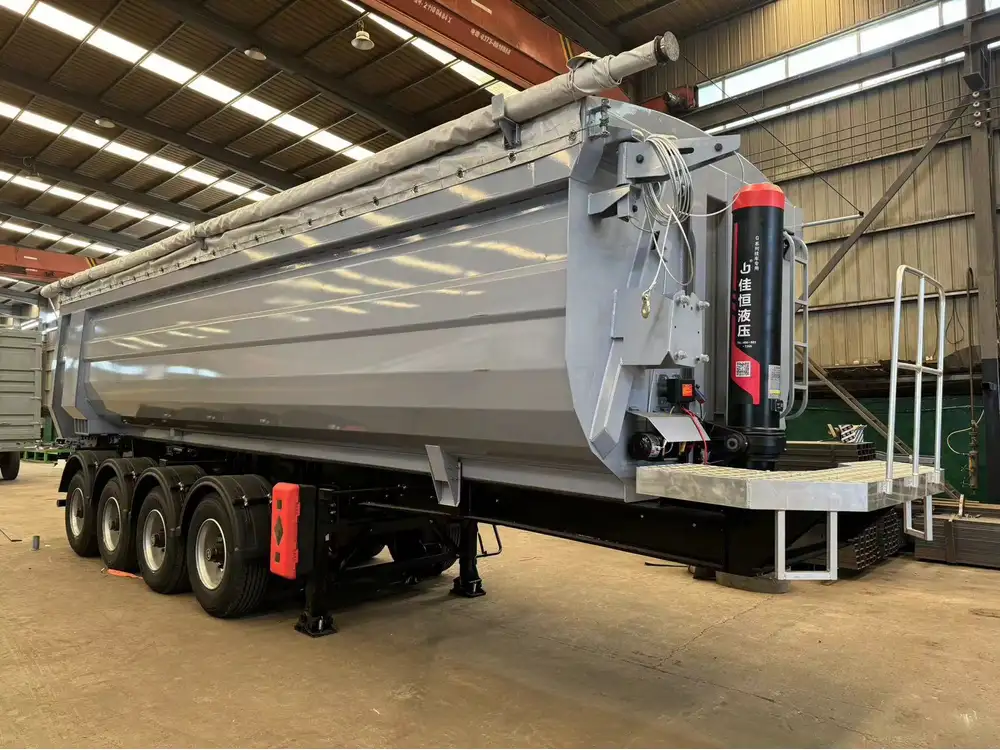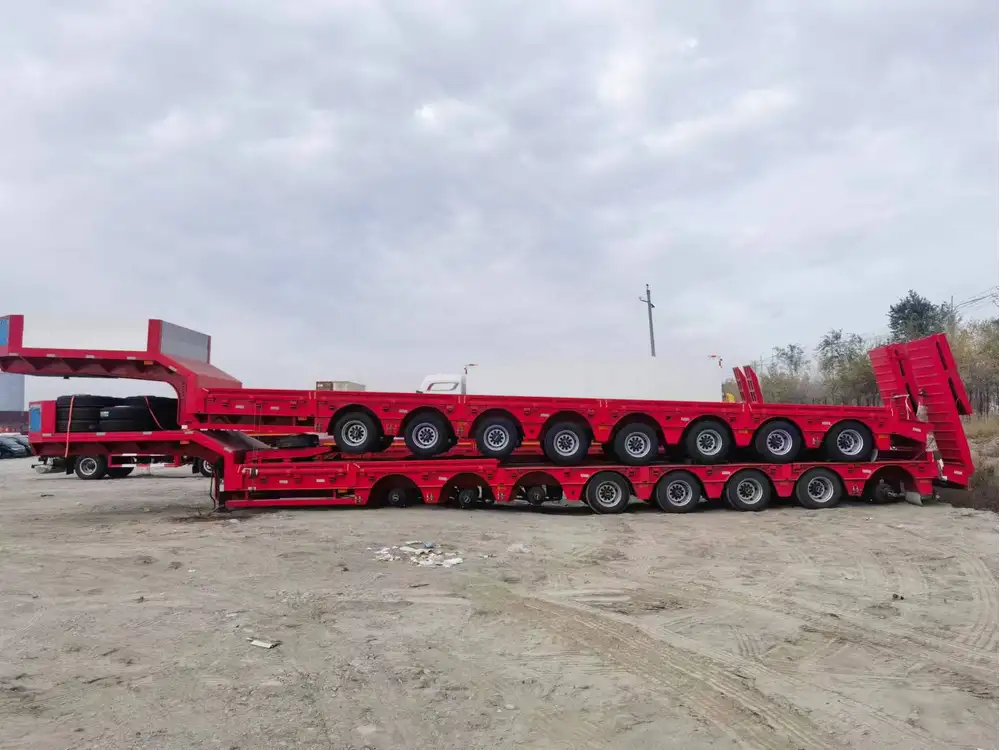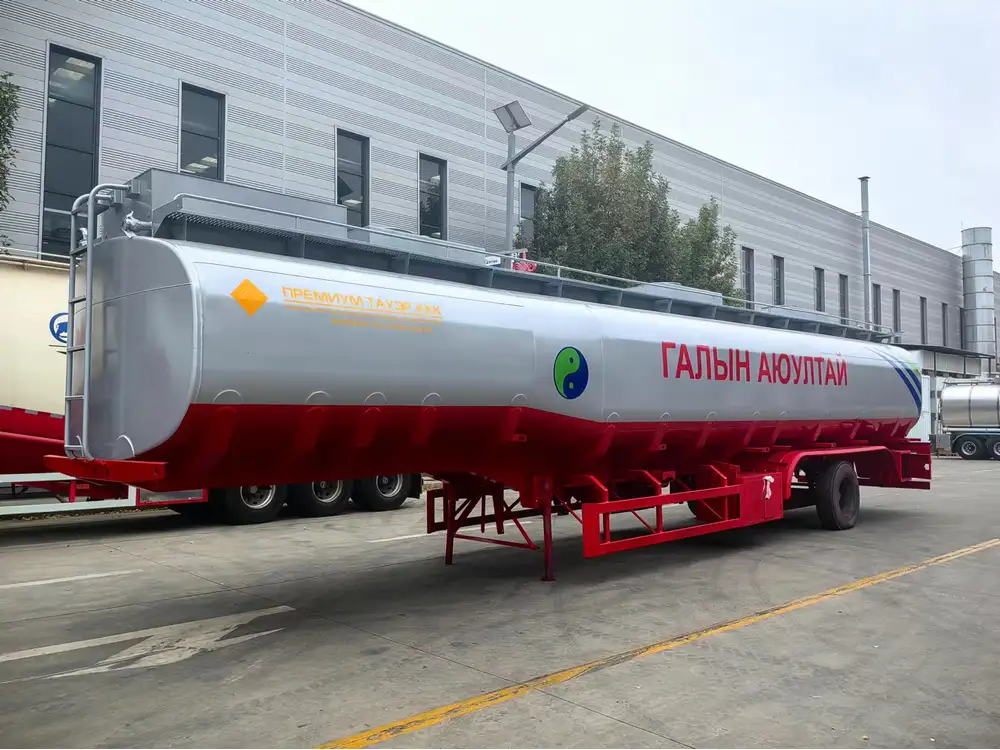Introduction to Semi-Trailer Fuel Tanks
In the world of heavy-duty transportation, semi-trailers play a pivotal role in logistics, freight distribution, and supply chain management. One of the critical factors influencing their operational efficiency is their fuel capacity. Understanding how many gallons of fuel a semi-trailer can hold is essential for fleet owners, logistics managers, and drivers alike. This knowledge not only impacts fuel efficiency but also operational costs and route planning.
Fuel Tank Specifications for Semi-Trailers
The fuel tank capacity of a semi-trailer can vary significantly based on several factors, including the type of trailer, the engine specifications, and the needs of the trucking operation. Most semi-trailers come equipped with dual fuel tanks, allowing for extended travel distances without the need for frequent refueling stops.

Typical Fuel Capacities
| Fuel Tank Type | Typical Capacity (Gallons) |
|---|---|
| Single Tank | 100 to 150 gallons |
| Dual Tanks | 200 to 300 gallons |
| Larger Configurations | Up to 500 gallons or more |
While single tanks can hold anywhere from 100 to 150 gallons, dual tank configurations can substantially increase this capacity, often ranging from 200 to as much as 300 gallons. Specialized configurations may even exceed 500 gallons, catering to specific transportation needs and distance requirements.
Factors Influencing Fuel Tank Capacity
1. Type of Semi-Trailer
Different types of semi-trailers, such as flatbeds, refrigerated trailers, and tanker trailers, may have varying fuel requirements based on their load and operational use. For example:
- Refrigerated Trailers: Often require additional power, thus typically have larger fuel tanks to accommodate the refrigeration unit’s needs.
- Flatbeds and Dry Vans: Usually maintain standard fuel storage as their operational dynamics do not demand more than usual.

2. Regulations and Compliance
Transportation regulations may also dictate certain parameters for fuel storage, particularly regarding safety. Ensuring compliance with local, state, and federal regulations is crucial for carriers. This encompasses aspects like:
- Maximum Fuel Limitations: Depending on the jurisdiction, there could be limits imposed on how much fuel can be stored on commercial vehicles.
- Environmental Regulations: Restrictions related to emissions and the environmental impact of carrying fuel.
3. Fleet Management Practices
Effective fleet management systems employ data analytics to maximize fuel efficiency. Practices such as optimizing fuel use through route planning and driver training can influence how much fuel needs to be carried. Fleet managers may assess:
- Fuel Efficiency Ratings of Tractors: Certain models are engineered to maximize fuel economy, potentially reducing the need for larger tanks.
- Common Travel Routes: Consistent long-distance routes may necessitate larger fuel tanks to minimize refueling interruptions.
Calculating Fuel Requirements for Long-Haul Trips
Understanding the relationship between fuel capacity and operational efficiency leads to practical applications, especially when planning long-haul journeys. Fleet operators must take into account:
Fuel Economy: Different trucks offer various miles per gallon (MPG) ratings, which can significantly affect how far a loaded semi-trailer can travel on a full tank.
Weight and Load Impact on Fuel Consumption: Heavier loads require more fuel, which might shift the focus back to maximizing a semi-trailer’s fuel capacity.

Estimating Fuel Needs
To estimate the fuel needs for a long-haul journey, the following formula can be utilized:
[ \text{Total Fuel Needed} = \frac{\text{Total Distance}}{\text{MPG}} ]For example, if a semi-trailer needs to cover 800 miles and has a fuel efficiency of 6 MPG:
[ \text{Total Fuel Needed} = \frac{800}{6} \approx 133.33 \text{ gallons} ]This estimate helps determine whether the current fuel tank setup can accommodate the entire journey without necessitating mid-route refueling.
Advantages of Understanding Fuel Capacity
Enhanced Decision-Making
With a solid grasp of a semi-trailer’s fuel capacity, fleet managers can make informed decisions about:
- Fleet Expansion: Understanding the nuances of fuel needs can influence whether to scale fleet size or invest in new vehicles.
- Load Optimization: By recognizing how load weight impacts fuel consumption, managers can strategize on load distributions to optimize efficiency.

Cost Efficiency
Efficient use of fuel resources translates to significant cost savings. Knowing how many gallons a semi-trailer can hold aids in:
- Budgeting for Fuel Expenses: Accurate estimates allow for more precise expense forecasting.
- Scheduling Refueling Stops: Ensuring adequate fuel levels based on route planning can minimize downtime and enhance delivery schedules.
Innovations in Fuel Storage Technology
In the quest for greater efficiency, innovations in fuel storage technology are continuously being developed. These advancements can help alleviate issues related to capacity and consumption:
1. Fuel Bladders
Innovative fuel bladders are lightweight, flexible containers that can be used within the voids of a trailer to maximize space. This technology allows for additional gallons of fuel without compromising other cargo space.

2. Fuel Management Systems
Modern semi-trailers can be equipped with advanced fuel management systems that monitor fuel levels in real-time. These systems can alert drivers to fuel status, optimize consumption, and assist in route planning to ensure maximum efficiency.
3. Alternative Fuels
The transition toward greener transportation solutions has led to interest in alternative fuels such as biodiesel and electric hybrids. Exploring these options may offer operational cost benefits while also adhering to emerging environmental regulations.
Common Questions Regarding Semi-Trailer Fuel Capacity

How Do I Know the Fuel Capacity of My Semi-Trailer?
Most semi-trailer manufacturers provide specifications in their documentation. Additionally, checking the labels on the fuel tanks or consulting owner manuals will reveal exact capacities.
Can I Increase My Semi-Trailer’s Fuel Capacity?
While it may be possible to install larger fuel tanks, considerations regarding legality and space must be addressed. Consulting a professional for modifications is advisable.
How Can I Determine My Fuel Efficiency?
To assess fuel efficiency, track miles driven in relation to gallons consumed. Keeping a log can help you identify patterns and make decisions that enhance fuel usage.

Are There Weight Regulations for Loaded Fuel Tanks?
Indeed, trucks have gross vehicle weight (GVW) limits, which include the weight of fuel. It’s crucial to ensure compliance with legal weight constraints while loading fuel within your semi-trailer.
Conclusion
Understanding how many gallons of fuel a semi-trailer holds is more than just a box to check on a specification sheet; it is a fundamental aspect of effective fleet management and operational efficiency. By recognizing the various factors that impact fuel capacity, including vehicle type and operational needs, stakeholders can enhance decision-making processes, boost cost efficiency, and remain compliant with regulations.
Equipped with this knowledge, fleet managers can strategically plan for more efficient operations, navigate the complexities of long-haul trips, and leverage innovative technologies to move toward a more sustainable future. Proactive measures will ultimately provide a competitive edge in the dynamic landscape of the transport and logistics industry.



